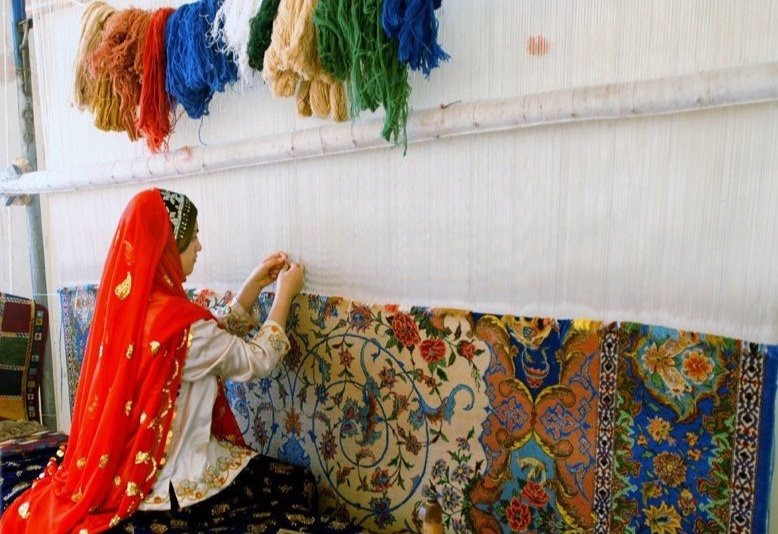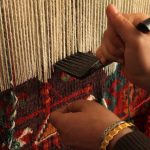
Persian rugs are more than just beautiful works of art – they are also steeped in history, culture, and tradition. In this blog post, we’ll delve deeper into the history and significance of Persian rugs, exploring the techniques, materials, and designs that have made them so iconic.
The Origins of Persian Rugs
Persian rug-making has a long and storied history that dates back over 2,500 years. The earliest known examples of Persian rugs were discovered in the frozen tombs of Siberia and date back to around 500 BC. These early rugs were made using simple weaving techniques and were used to cover floors and walls, as well as for clothing and bedding.
Over time, Persian rug-making became more sophisticated, with weavers developing intricate designs and using higher-quality materials. The earliest known examples of rug-making in Iran were produced during the Safavid dynasty (1501-1722), which is considered to be the golden age of Persian rug-making.
During this time, Persian rug-making flourished, with weavers producing some of the most beautiful and complex designs in the world. The Safavid dynasty saw the development of a distinctly Persian style, characterized by intricate floral and geometric motifs, bold colours, and high-quality materials.
The Art of Persian Rug-Making
Persian rug-making is a highly skilled craft that requires years of training and experience. The process begins with the selection of high-quality wool or silk, which is then washed, carded, and spun into yarn. The yarn is then dyed using natural pigments, which can take weeks or even months to produce.
Once the yarn has been dyed, it is woven into a rug using a variety of techniques. The most common technique is the “knot” or “pile” weave, in which individual knots are tied onto a foundation of warp threads. This process is repeated row by row until the entire rug is complete.
Persian rugs are known for their intricate designs and patterns, which are often inspired by nature, mythology, and religion. Many Persian rugs feature floral or animal motifs, such as birds, deer, and trees, which are representative of different regions or tribes. Others may feature geometric patterns that are associated with specific religious or cultural beliefs.
One of the most striking aspects of Persian rugs is the way in which they reflect the cultural and historical context in which they were created. Many rugs feature inscriptions or symbols that offer insight into the beliefs and values of the people who made them.
The Significance of Persian Rugs in Iranian Culture
In traditional Iranian households, Persian rugs are an essential part of daily life. They are used for a variety of purposes, including prayer, seating, and sleeping, as well as for decoration. Persian rugs are often considered to be works of art, and many families pass down their rugs from generation to generation as treasured heirlooms.
In addition to their practical uses, Persian rugs also have deep cultural significance. They are often given as gifts for special occasions, such as weddings and births, and are sometimes used as a form of currency in rural areas.
Persian rugs are also important symbols of Iranian identity and heritage. They have played a central role in the country’s history and are a testament to the creativity and ingenuity of Iranian artisans.
The Cultural and Symbolic Meaning of Persian Rugs
Persian rugs have a rich and varied cultural significance. They are often seen as expressions of artistry, creativity, and craftsmanship, and have been used for centuries to convey important cultural and religious messages.
For example, many Persian rugs feature symbols and motifs that are associated with specific regions or tribes. These symbols may include geometric patterns, animals, plants, or religious figures. They may also feature inscriptions in Arabic or Farsi that offer prayers, blessings, or messages of hope.
Persian Rugs Today
Today, Persian rugs continue to be popular around the world, prized for their beauty, durability, and cultural significance. While the traditional techniques of rug-making remain largely unchanged, contemporary designers and artists have also brought new perspectives and styles to the art form.
At Apolon Rugs, we offer a wide range of Persian rugs that celebrate the rich history and beauty of this unique art form. From classic floral designs to modern abstract patterns, our rugs are made using traditional techniques and the finest materials, ensuring that they will be treasured for generations to come.
In addition to our range of rugs, we also offer repair and restoration services for antique and vintage Persian rugs. Our team of skilled craftsmen can repair and restore even the most delicate and intricate rugs, ensuring that they are preserved for future generations to enjoy.
Conclusion
In conclusion, Persian rugs are more than just beautiful works of art – they are also important cultural symbols that reflect the history, traditions, and beliefs of the people who made them. From their earliest origins to the present day, Persian rugs have played a central role in Iranian culture, and continue to be cherished and admired around the world. At Apolon Rugs, we are proud to be a part of this rich tradition, offering a range of high-quality Persian rugs that celebrate the beauty and craftsmanship of this unique art form. Whether you are looking for a traditional rug to decorate your home or need restoration services for an antique family heirloom, we are here to help. Contact us today to learn more about our services and explore our collection of Persian rugs.




